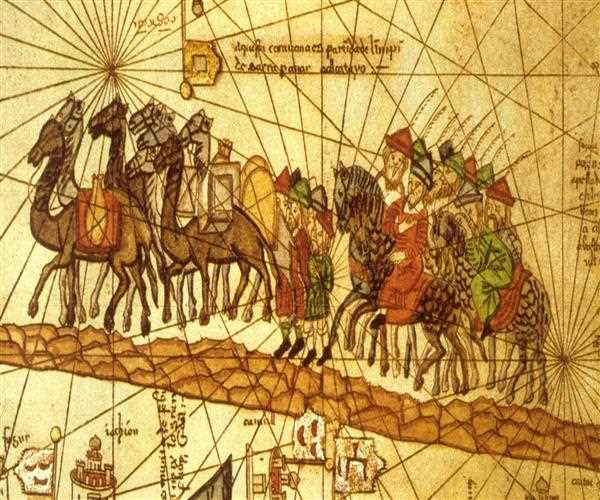The Silk Road was a network of trade routes that connected China and the Far East with countries in Europe and the Middle East. It was active from the second century BCE until the mid-15th century, and it played a central role in facilitating economic, cultural, political, and religious interactions between the East and West.
The Silk Road was not a single route, but rather a complex network of land and sea routes that stretched for thousands of miles. The most famous section of the Silk Road was the overland route that ran through Central Asia. This route was used by merchants who traded goods such as silk, spices, tea, ivory, cotton, wool, precious metals, and ideas.

The Silk Road was not only a route for trade, but also a conduit for cultural exchange. As merchants and travelers moved along the Silk Road, they brought with them their own cultures and traditions. This led to a rich exchange of ideas and beliefs, which had a profound impact on the development of the cultures of the East and West.
The Silk Road also played an important role in the spread of religions. Buddhism, for example, was introduced to China along the Silk Road, and it eventually became one of the major religions of the country. Islam also spread along the Silk Road, and it eventually became the dominant religion in Central Asia.
The Silk Road declined in the 15th century due to a number of factors, including the rise of the Ottoman Empire, the discovery of new trade routes by European explorers, and the decline of the Chinese economy. However, the Silk Road continues to be studied and admired by historians today. It is seen as a symbol of the interconnectedness of the world, and it is a reminder of the importance of cultural exchange.
Here are some of the specific ways in which the Silk Road influenced history:
- Economic: The Silk Road helped to create a vast network of trade and commerce between East and West. This led to the exchange of goods, ideas, and technologies, which helped to spur economic growth and development in many parts of the world.
- Cultural: The Silk Road also helped to spread cultures and religions across the globe. This led to a greater understanding and appreciation of different cultures, which helped to promote peace and understanding between different peoples.
- Political: The Silk Road also played a role in the spread of political ideas and institutions. This led to the development of new forms of government and new ways of thinking about politics, which had a profound impact on the course of history.
The Silk Road was a complex and multifaceted phenomenon that had a profound impact on the course of history. It was a major factor in the development of trade, culture, and politics in many parts of the world, and it continues to be studied and admired by historians today.